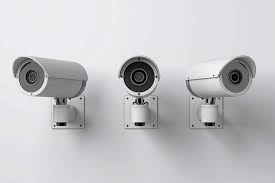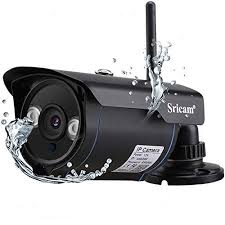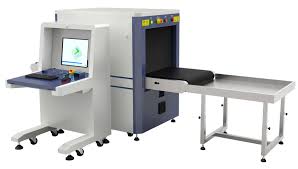Closed Circuit Television (CCTV): Ensuring Safety and Security
In today’s fast-paced world, safety and security have become paramount concerns for individuals, businesses, and communities alike. One technology that has revolutionized the way we monitor and protect our surroundings is Closed Circuit Television, commonly known as CCTV.
CCTV systems consist of cameras that capture video footage in a specific area or premises. Unlike traditional television systems, CCTV operates on a closed circuit, meaning the video feed is only accessible to authorized personnel. This closed nature of CCTV ensures privacy and enhances security measures.
The primary purpose of CCTV is to deter criminal activities and provide evidence in case of incidents. By strategically placing cameras in vulnerable areas, such as entrances, parking lots, or public spaces, CCTV acts as a powerful deterrent against potential wrongdoers. The mere presence of cameras can discourage criminal behavior and help maintain a safer environment.
However, the benefits of CCTV go beyond prevention. In the unfortunate event of an incident or crime occurring within the camera’s range, recorded footage becomes invaluable evidence for investigations and legal proceedings. Law enforcement agencies can analyze the footage to identify suspects or gather crucial information about the incident.
Moreover, CCTV systems offer real-time monitoring capabilities. With advanced technologies like video analytics and remote access features, users can monitor live feeds from anywhere at any time. This allows for immediate response to suspicious activities or emergencies, ensuring swift action can be taken when required.
In addition to security purposes, CCTV has found applications in various industries and sectors. Retail stores utilize CCTV to prevent thefts and monitor customer behavior for marketing insights. Traffic authorities employ CCTV cameras for traffic management and enforcement of road safety regulations. Educational institutions use them to enhance campus security and monitor student activities.
With advancements in technology, modern CCTV systems offer numerous features that further enhance their effectiveness. High-definition cameras provide crystal-clear images with enhanced details for better identification purposes. Pan-tilt-zoom (PTZ) cameras allow operators to remotely control the camera’s movement and zoom capabilities, providing a wider coverage area. Additionally, the integration of video analytics enables automated monitoring and alert systems, reducing the need for constant human surveillance.
It is important to note that while CCTV systems can greatly enhance safety and security, their implementation should be done in compliance with privacy regulations. Proper signage indicating the presence of cameras should be displayed, and access to recorded footage must be strictly controlled to protect individuals’ privacy rights.
In conclusion, Closed Circuit Television has become an indispensable tool in ensuring safety and security in our modern world. Its ability to deter criminal activities, provide evidence for investigations, and enable real-time monitoring makes it an invaluable asset for individuals, businesses, and communities alike. By embracing CCTV technology responsibly and ethically, we can create safer environments for everyone.
Frequently Asked Questions About Closed Circuit Television (CCTV)
- What is open circuit vs closed-circuit television?
- What is CCTV and its uses?
- What is an example of closed circuit TV?
What is open circuit vs closed-circuit television?
Open Circuit Television (OCTV) and Closed Circuit Television (CCTV) are two different concepts when it comes to video surveillance systems.
Open Circuit Television (OCTV) refers to a system where the video signals captured by the cameras are broadcasted on public channels or networks. In OCTV, the video feed is not restricted to a closed circuit and can be accessed by anyone who tunes in to the specific channel or network. This type of system was commonly used in early television broadcasting and does not provide privacy or security as the video signals are openly transmitted.
On the other hand, Closed Circuit Television (CCTV) is a private video surveillance system where the video signals captured by cameras are transmitted within a closed circuit. The term “closed circuit” means that the video feed is only accessible to authorized personnel or designated monitors. CCTV systems are commonly used for security purposes in various settings such as homes, businesses, public spaces, and institutions.
The main difference between OCTV and CCTV lies in the accessibility of the video feed. OCTV is open and available for public viewing, while CCTV is restricted to authorized individuals who have access to the closed circuit. This closed nature of CCTV ensures privacy, control over who can view the footage, and enhanced security measures.
In summary, OCTV involves broadcasting video signals on public channels or networks that can be accessed by anyone, while CCTV operates within a closed circuit where access to the video feed is limited to authorized personnel only.
What is CCTV and its uses?
CCTV, or Closed Circuit Television, is a system that uses cameras to capture video footage in a specific area or premises. Unlike traditional television systems, CCTV operates on a closed circuit, meaning the video feed is only accessible to authorized personnel. This closed nature of CCTV ensures privacy and enhances security measures.
The uses of CCTV are extensive and span across various industries and sectors. Here are some common applications:
- Security and Surveillance: The primary purpose of CCTV is to monitor and enhance security. By strategically placing cameras in vulnerable areas, such as entrances, parking lots, or public spaces, CCTV acts as a powerful deterrent against potential wrongdoers. It helps prevent criminal activities and provides valuable evidence in case of incidents.
- Crime Prevention: The presence of CCTV cameras can deter criminal behavior. Potential wrongdoers are less likely to commit offenses when they know they are being watched. This contributes to creating safer environments for individuals, businesses, and communities.
- Investigation and Evidence: In the event of an incident or crime occurring within the camera’s range, recorded footage becomes crucial evidence for investigations and legal proceedings. Law enforcement agencies can analyze the footage to identify suspects or gather essential information about the incident.
- Traffic Management: Traffic authorities utilize CCTV cameras for traffic monitoring, management, and enforcement of road safety regulations. Cameras placed at intersections or highways help monitor traffic flow, identify violations like speeding or red-light running, and aid in managing traffic congestion.
- Retail Loss Prevention: Retail stores use CCTV systems to prevent thefts and monitor customer behavior for marketing insights. Cameras placed strategically within the store help deter shoplifting by creating a sense of surveillance among potential thieves.
- Workplace Monitoring: Employers may use CCTV in workplaces to monitor employee activities for safety purposes or ensure compliance with company policies. However, it is essential that such monitoring is carried out within legal frameworks while respecting employees’ privacy rights.
- Crowd Control and Event Security: CCTV systems are employed during large gatherings, events, or public demonstrations to monitor crowd behavior, identify potential security threats, and ensure public safety.
- Remote Monitoring: With advancements in technology, modern CCTV systems offer remote access features. Users can monitor live feeds from anywhere at any time, enabling immediate response to suspicious activities or emergencies.
- Personal Safety: Individuals may install CCTV cameras in their homes or personal properties for added security and peace of mind. It helps monitor the surroundings and acts as a deterrent against intruders.
It is important to note that while CCTV systems provide numerous benefits, their implementation should be done responsibly and in compliance with privacy regulations to protect individuals’ rights. Proper signage indicating the presence of cameras should be displayed, and access to recorded footage must be strictly controlled.
What is an example of closed circuit TV?
An example of a closed circuit television (CCTV) system is the surveillance cameras commonly used in retail stores. These cameras are strategically placed throughout the store to monitor various areas, such as entrances, aisles, and cash registers. The cameras capture video footage of the premises and transmit it to a closed circuit, where it can be monitored by authorized personnel on dedicated monitors or through a networked system. The recorded footage can be used for real-time monitoring, investigating incidents, or providing evidence if needed. Retailers often use CCTV systems to deter theft, monitor customer behavior, and ensure the safety and security of both employees and customers within the store.



